Red Dot Abroad
How one S’porean woman built her dream 24 sq m tiny home to host guests in New Zealand
Sign up now: Get ST's newsletters delivered to your inbox

Ms Priscilla Tan was able to fulfil her dream of rearing farm animals on the property she bought with her husband Roland Ng.
PHOTO: COURTESY OF PRISCILLA TAN
Follow topic:
- Singaporeans Priscilla Tan and Roland Ng moved to Wellington, New Zealand, in 2019 and built a tiny home after finding land for NZ$400,000.
- A contractor absconded with some of their money, causing delays, increased costs exceeding NZ$1 million and significant stress.
- Ms Tan's tiny home, costing NZ$10,000 to furnish, is listed on Airbnb for around $200 a night and has hosted over 200 guests.
AI generated
SINGAPORE – There is a cheerful lilt in Ms Priscilla Tan’s voice as she describes the 24 sq m house she designed from the ground up in New Zealand’s capital Wellington – a place she and her husband Roland Ng now call home.
It has been nearly six years since the Singaporean couple moved to Wellington in September 2019, after Dr Ng secured a position as a general practitioner at a local clinic. The couple, who do not have children, are now permanent residents of New Zealand.
Having spent a decade as a fashion designer and another four years as head of jewellery design at Singapore-based fine jewellery company Choo Yilin, Ms Tan has an eye for detail.
Her move into interior design was a natural progression. “I’ve never formally trained in interior design, but I feel that my past work experience counts as hardcore training,” says Ms Tan. The 40-year-old has styled around 500 homes since starting her interior design company, StyledbyPT, in July 2018.
Her passion for design, coupled with a love for hosting, converged in late 2020. With some of the Covid-19 pandemic restrictions lifted, the couple began looking for a home that would meet their needs and NZ$800,000 (S$597,000) budget. Until then, they had been renting a three-bedroom house in the city of Lower Hutt.
Known for its natural landscapes, Lower Hutt is located about a 25-minute drive from Wellington International Airport and is one of four cities that constitute the Wellington metropolitan area.
“Many of the houses we saw were old and the insulation wasn’t that good, so we were very concerned. And new houses tend to be built near other houses, which is a bit strange, seeing as my view would be a stranger’s backyard,” she says.
“That’s what got me researching a bit more. And instead of houses, I found land.”
One of the plots she discovered spanned just over 5,500 sq m in Lower Hutt, with a price tag of around NZ$400,000.
The plot sat on a slope and nearly half of it was designated as protected land – meaning nothing could be built there – but it ticked all their boxes.
It was large enough to rear farm animals, fulfilling Ms Tan’s long-held dream, and within eight minutes’ drive of Dr Ng’s workplace – his one ask in their property search. The location also offered privacy and coastal views from select vantage points.
The couple placed their bid for the land, which was accepted within four hours.
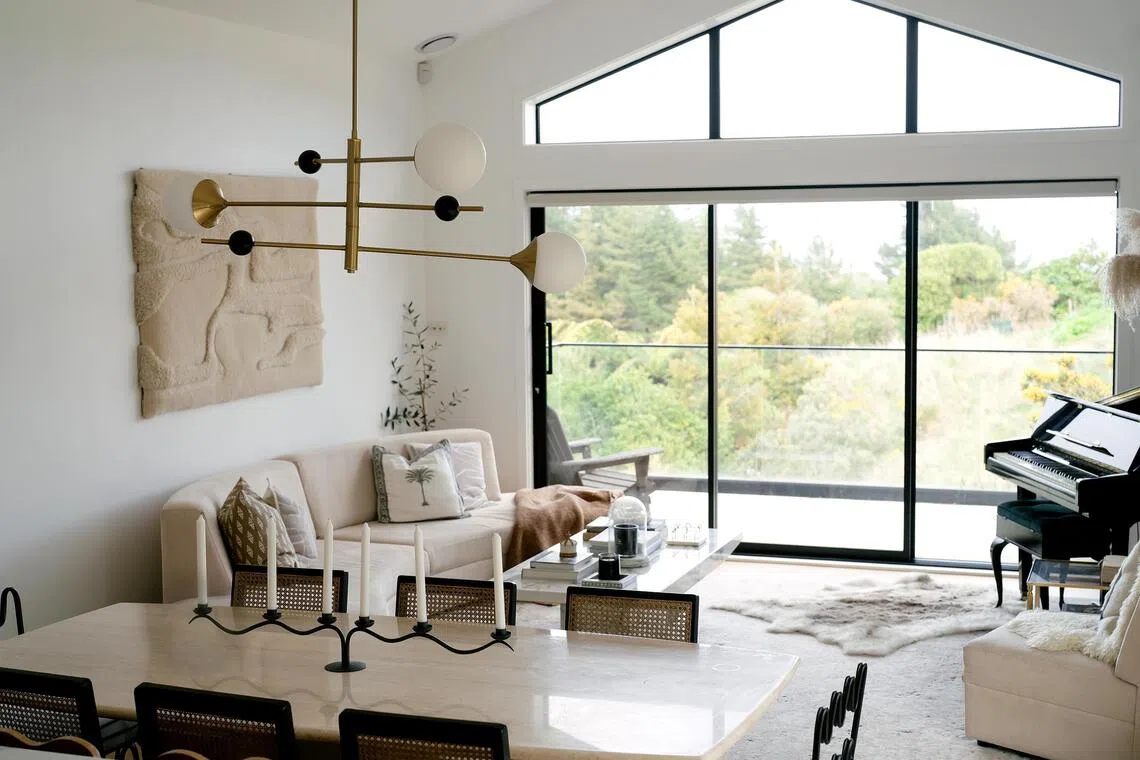
Ms Priscilla Tan’s main home has floor space of 124 sq m, with three bedrooms and two bathrooms.
PHOTO: PRISCILLA TAN
What started as a straightforward plan to build one main house took an unexpected turn when the couple decided to follow a trail of horse dung, which led to a secluded corner of their property. Ms Tan immediately recognised it as ideal for a tiny home, which typically refers to properties 37 sq m or less in size.
The concept was popularised by American designer Jay Shafer, who built a 7 sq m house on wheels in 1997 and later founded the Tumbleweed Tiny House Company in 1999 to help others live more sustainably and affordably.
The term gained global traction in the 2010s, thanks to reality shows like Tiny House Nation (2014) and the documentary Tiny: A Story About Living Small (2013). Today, the tiny home movement is synonymous with sustainability, minimalism, affordability and the pursuit of lifestyle freedom.
That sloping piece of land became the site of her 24 sq m tiny home, complete with an outdoor dining area and a gazebo. Surrounded by native shrubs and trees, it has a parking space and private entrance.

Ms Tan and her husband found a spot perfect for a tiny home after following a trail of horse dung on their property.
PHOTO: PRISCILLA TAN
“We wanted our tiny home to have privacy, with its own kitchen, washroom and more. So, if we were to rent it out, or if friends or family were to visit, they would be comfortable and feel like it is their own home,” she says.
Construction nightmare
After moving to Wellington, Ms Tan took on fewer projects to settle into her new environment.
Many of her Singapore-based clients also decided not to continue their projects with her, citing the challenges of distance and lack of in-person meetings.
She took the slowdown in her stride. Ironically, it was the pandemic that reignited her career.
“One of the biggest miracles and blessings for me came out of the pandemic. It saved my life because suddenly working virtually became the norm,” she says.
“I became even busier than before Covid-19 hit. I was designing homes not only in Singapore, but also around the world, and had inquiries from Australia, the United States, Brunei and beyond.”
Today, Ms Tan manages a Singapore office with two full-time staff, flying back twice a year to oversee projects, create social media content and meet clients in person.
Other challenges were more daunting. While the couple initially wanted to complete the tiny home before building the main house, experts advised that it would be more cost-effective to build both simultaneously. Ms Tan and her husband took the advice and hired a builder to start work in March 2021.
However, around 12 months later – with both houses just 50 per cent complete – their builder took off with half of the roughly NZ$600,000 they had invested in the construction. Ms Tan later found out from his co-workers and suppliers that he had incurred debt from gambling.
She says: “It was the most stressful time of my life because a lot of the building materials hadn’t been ordered. Later on, people he owed money to would smash our windows and make trouble on our property.”
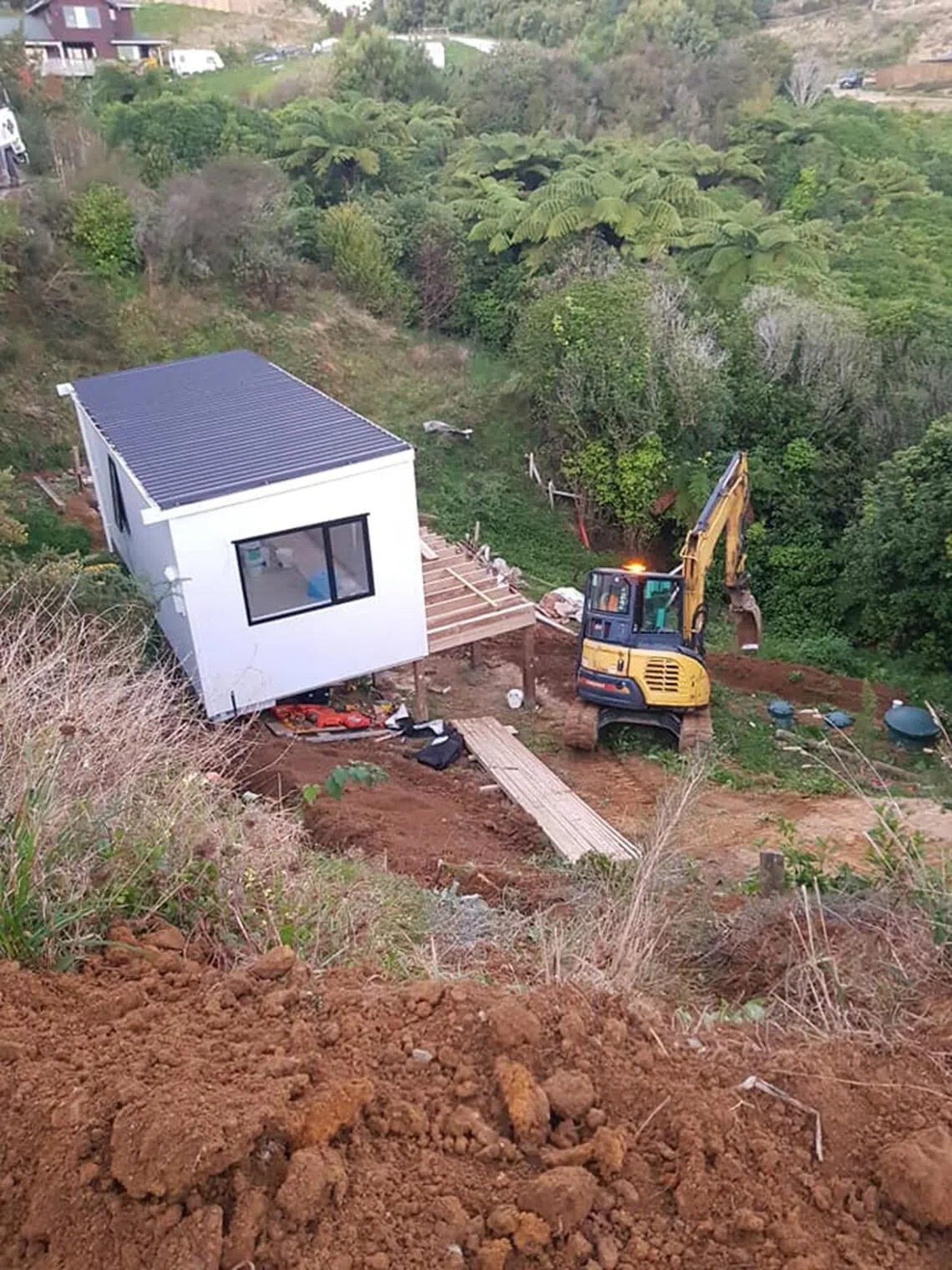
Construction of the tiny home took longer than expected due to complications the couple faced with their builder.
PHOTO: PRISCILLA TAN
Although the couple sought legal advice, they ultimately decided against pursuing legal action, realising there would be little chance of meaningful compensation.
After much back and forth in person and over the phone, Ms Tan managed to convince the same builder to complete the construction of the tiny home so they could move in by May 2022.
However, upon completing the tiny home, the builder left the country. The couple were left with no choice but to hire a new builder to complete the remaining works on the property, which involved injecting additional funds into the project.
The total construction cost eventually ballooned to over a million New Zealand dollars.
To make matters worse, torrential rains that year triggered a landslide on the slope where the tiny home stood. The couple had to engage engineers to stabilise the land and reinforce the structure to ensure it was safe for habitation.
“It felt like these bad things all happened at the same time. That kind of stress was something that I never thought I would encounter. It was the worst building nightmare come true,” she says.
It took 20 months instead of the eight they had originally planned, but in December 2022, both houses were finally complete.
That same year, the couple sold their four-room resale flat in Farrer Road, which they had kept as a safety net.
Designing her dream home
When designing her tiny home, Ms Tan knew one thing for certain – she did not want a loft.
While many tiny home designers construct lofts to maximise space, she preferred a single-storey layout that would be easy to clean, maintain and move around in. The compact home would still include everything essential: a kitchen, bathroom, living area and a bedroom with a queen-size bed.
She also considered the directions of sunrise and sunset when planning window placements to maximise natural light.
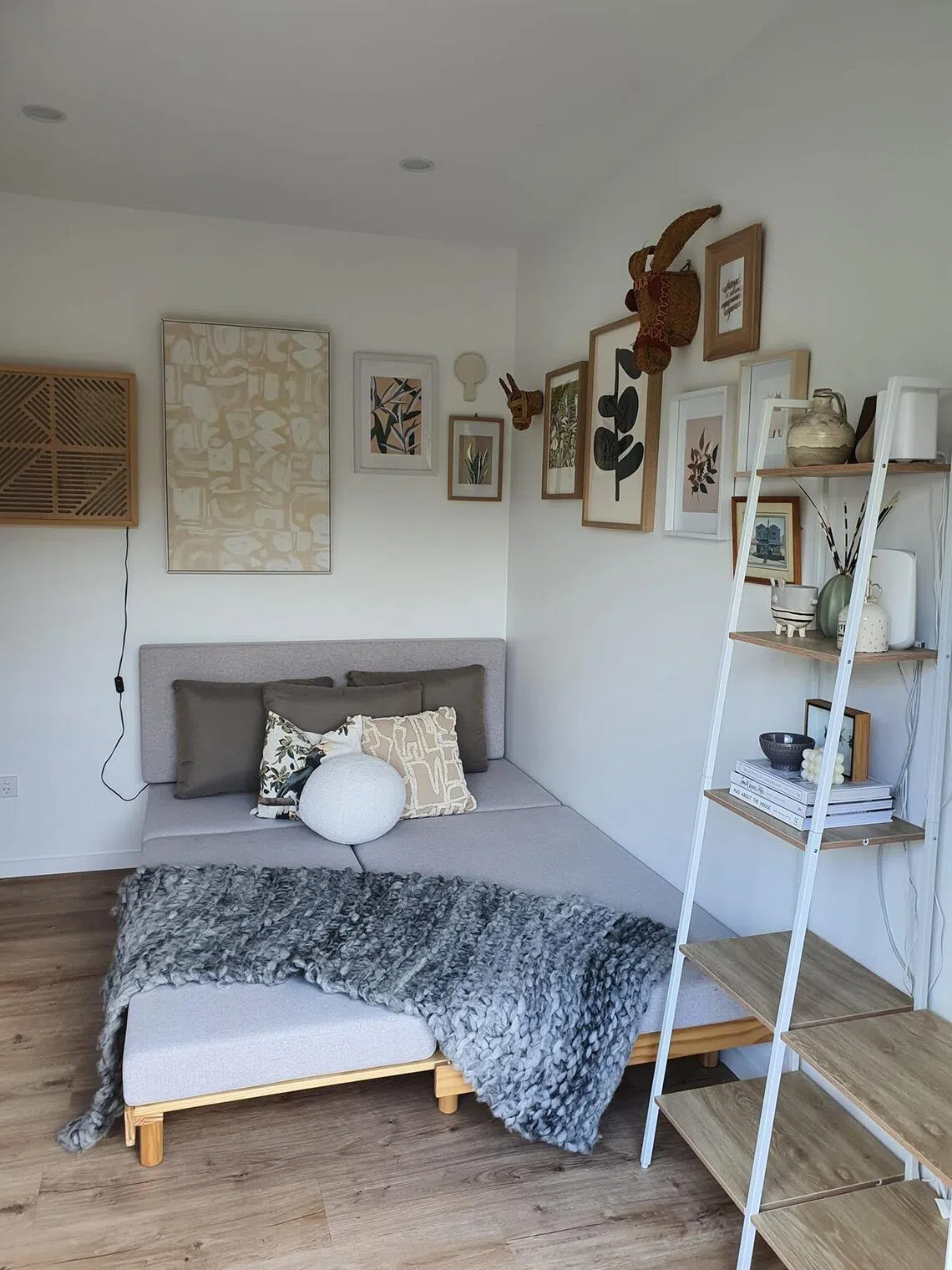
The living room sofa can be converted into an additional bed. The geometric wall lamp is in the top-left corner of the wall behind the bed.
PHOTO: PRISCILLA TAN
The tiny home’s aesthetic is “clean with eccentric touches”, Ms Tan says. To bring that to life, she painted the walls neutral tones like beige and grey, but decorated them with original print designs, and artworks by local artists and from the couple’s travels.
One piece of decor she is particularly fond of is a geometric wall lamp she shipped over from The Artling, a gallery in Tanjong Pagar, in 2022.
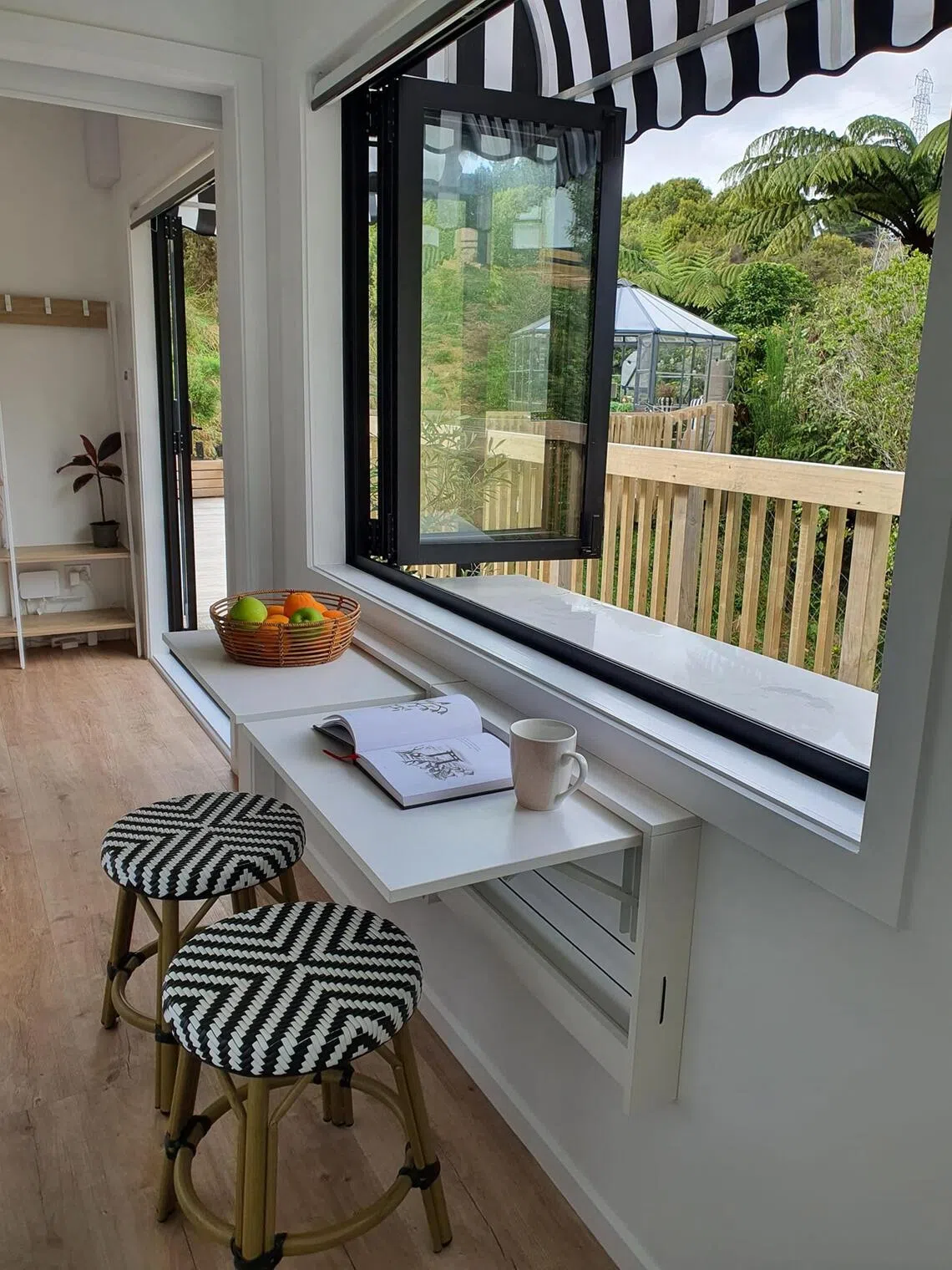
A bi-fold window in the kitchen opens up to a view of the native plants surrounding the tiny home.
PHOTO: PRISCILLA TAN
A bi-fold window brightens the kitchen. When fully folded to the side, it evokes the charm of a hole-in-the-wall cafe, complete with a classic black-and-white French-style awning affixed to the roof’s edge.
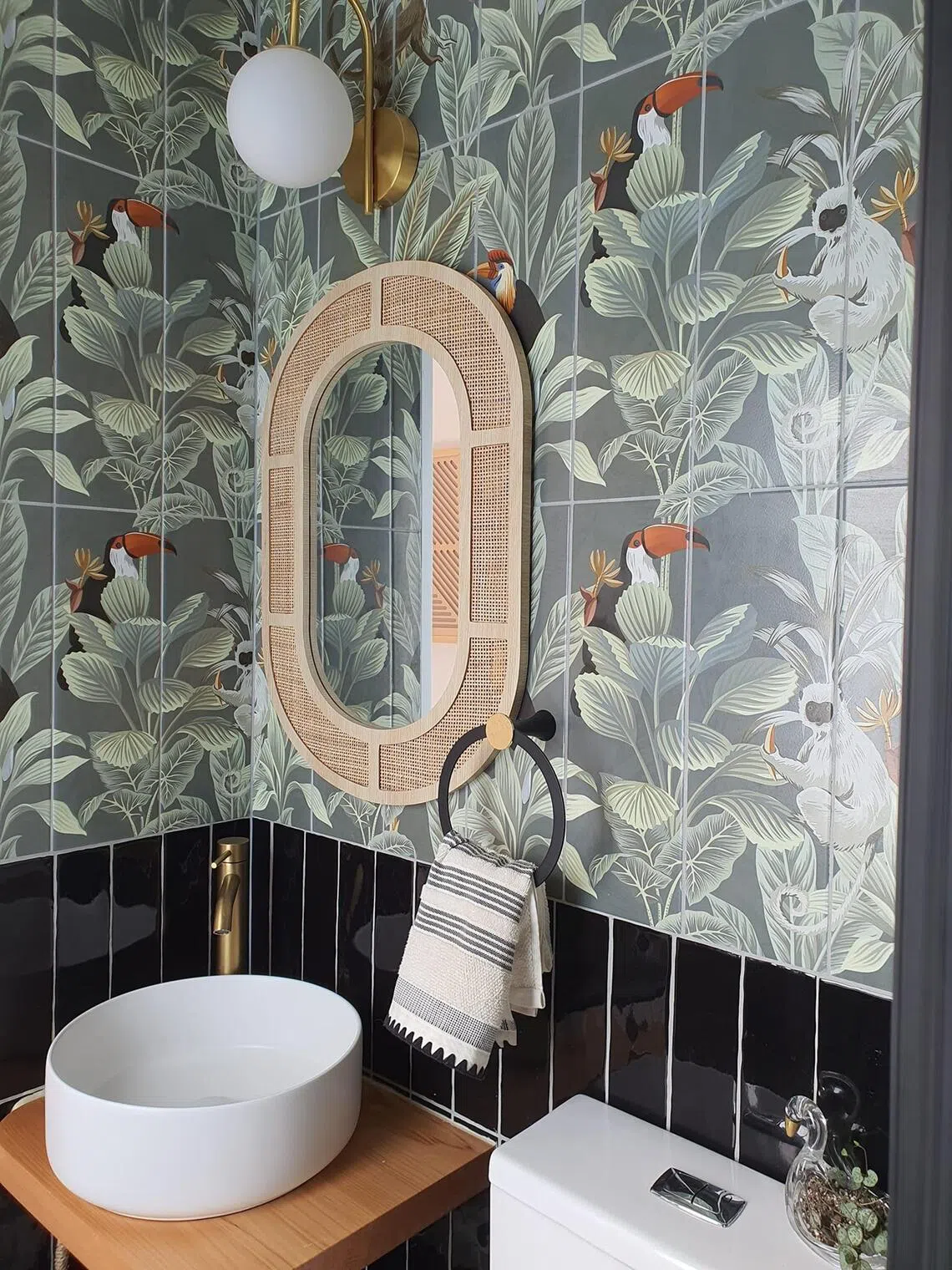
Ms Tan chose tropical-print tiles for the washroom for a unique pop of colour to the house.
PHOTO: PRISCILLA TAN
“The house is tiny, but I wanted it to be memorable. So, for the washroom, I went quite crazy and opted for something tropical with monkeys and birds,” says Ms Tan. She shipped the bathroom wall tiles – along with other items like the kitchen backsplash tiles and a sofa bed – from Chinese e-commerce site Taobao.
Given the limited space, furniture has to be functional and multi-purpose. The storage bed frame provides extra room for linens, while the living room sofa converts into a bed.
Outdoors, a gazebo with a clear plastic roof and walls houses a round six-seater dining table. The table is a cherished piece that could neither fit into the main nor tiny house, but that Ms Tan could not bear to part with. To enhance the mood of dining under the stars, she draped fairy lights across the structure, creating a warm glow after dusk.
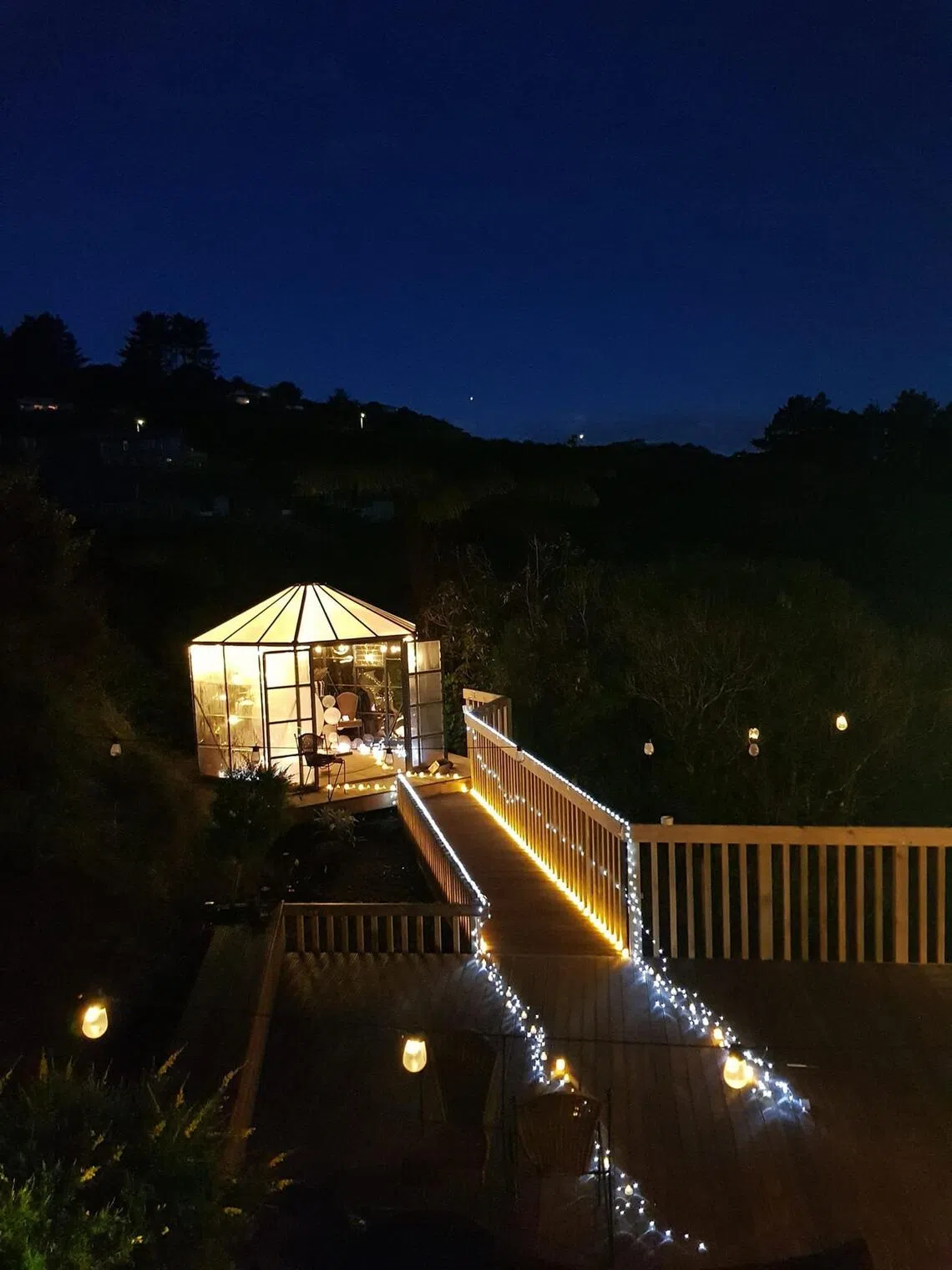
The gazebo lights up at night with fairy lights strung across the inside.
PHOTO: PRISCILLA TAN
The gazebo has become a favourite gathering spot. Guests who book stays at the tiny home use the place to stage birthday celebrations and marriage proposals.
In total, furnishing the tiny home cost around NZ$10,000. Ms Tan listed the property on Airbnb in March 2023, with her first guests being two women from New Zealand who stayed a week. She has since hosted over 200 people.
Over the past two years, Ms Tan has also realised her dream of living among animals. She now has 13 hens, two alpacas, two dogs and three cats under her care.
She bought her alpacas, Tofu and Pom Pom, from an acquaintance on the Kapiti Coast, about an hour’s drive from her home, when they were just six months old. Her hens are a mix of wild rescues and store-bought breeds.
Both of her shiba inu dogs were adopted from Singapore when they were around seven years old, while two of her cats also moved from Singapore. The third cat was a stray that wandered onto their property one day – and never left.
Caring for 20 animals, managing a rental property and running her interior design business is no mean feat. But for Ms Tan, her daily routine brings deep contentment – from collecting blue, brown and green speckled eggs from the chicken coop to readying her tiny home for the next guests.
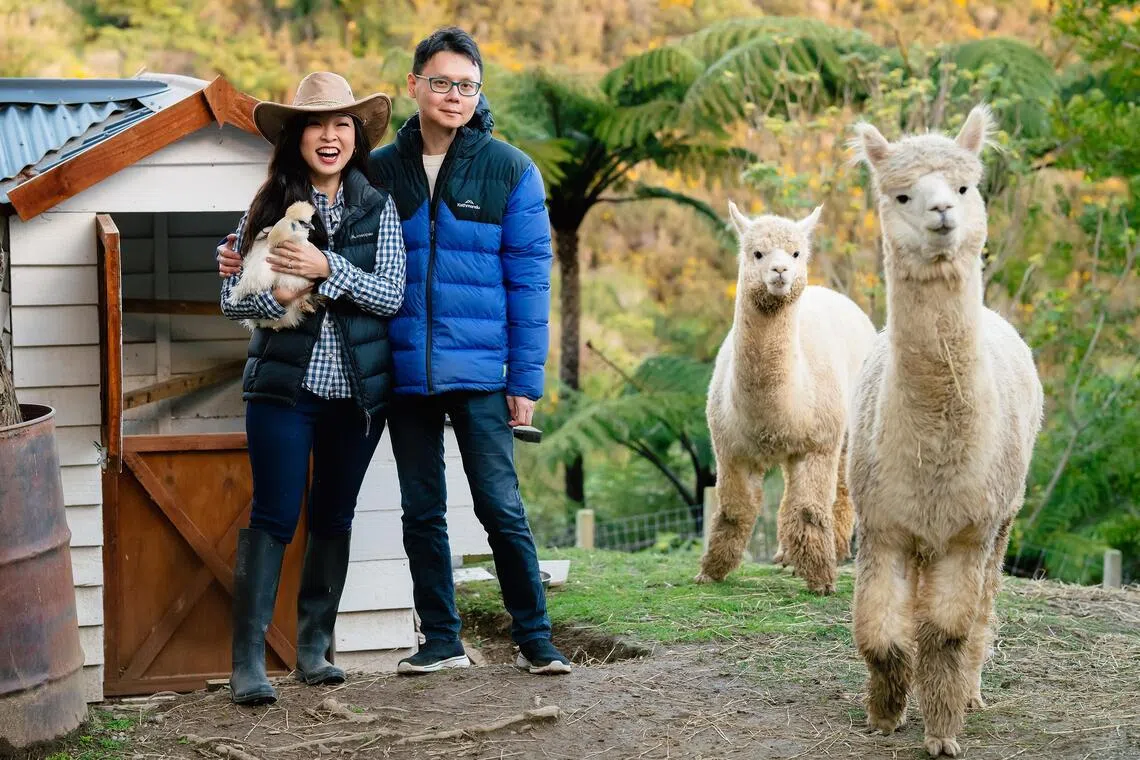
Ms Tan, her husband Dr Ng and their two male alpacas, Pom Pom and Tofu.
PHOTO: COURTESY OF PRISCILLA TAN
“When I was designing the tiny house, I’d always try to imagine the things that might wow me if I were a guest, whether it’s photo opportunities around the house, little snacks left as a surprise or heating rooms up in winter so it’s nice and toasty upon arrival,” she says. She often leaves guests fresh eggs, hand warmers or fluffy floor slippers.
“It’s about making them feel like it’s home, even if it’s for just a one-night stay.”
The tiny home is most popular in the summer months from December to February, when the weather is pleasant and guests can enjoy nature.
It is listed on travel booking platforms Airbnb Booking.com
There are no direct flights from Singapore to Wellington. Airlines such as Qantas and Air New Zealand typically transit in cities like Sydney, Brisbane and Auckland. Round-trip airfare usually costs around $1,400.
Most guests who book via Airbnb are domestic tourists looking for a quiet getaway, while the majority of those who book via Booking.com are international travellers hailing from Europe, says Ms Tan.
“We rarely get Singaporean visitors, but we have had a few so far. Sometimes, I’ll leave a few of my favourite snacks that I think other Singaporeans will enjoy too, like chips or popcorn from the local brand Sweet As, which my friends and family back home love,” she adds.
The property is open for booking, but Ms Tan prioritises hosting friends and family who visit.
She says: “Ultimately, sharing what we have created has been the biggest joy. It’s so wonderful to see people appreciate what we built from nothing and for them to make good memories in this space.”
Red Dot Abroad is a series on Singaporeans hosting the world, one stay at a time. For more travel stories, go to
str.sg/travel
This article contains affiliate links. If you buy through these links, we may earn a small commission.


